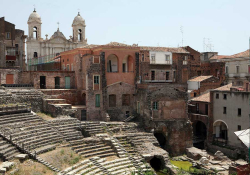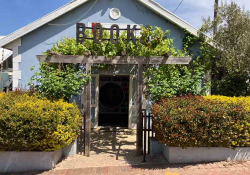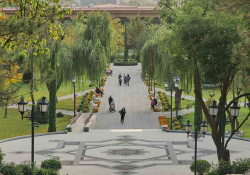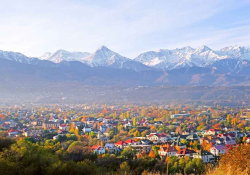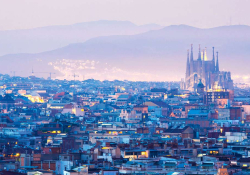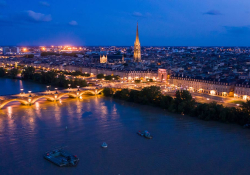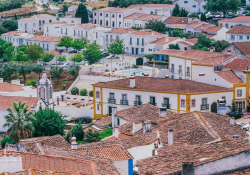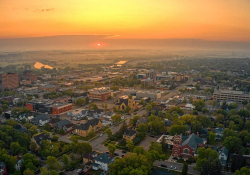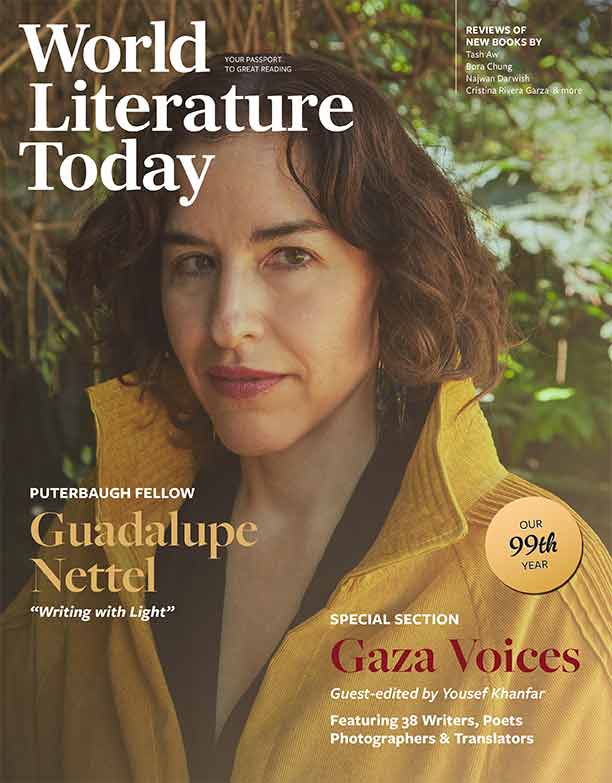Oaxaca: Follow the Parade
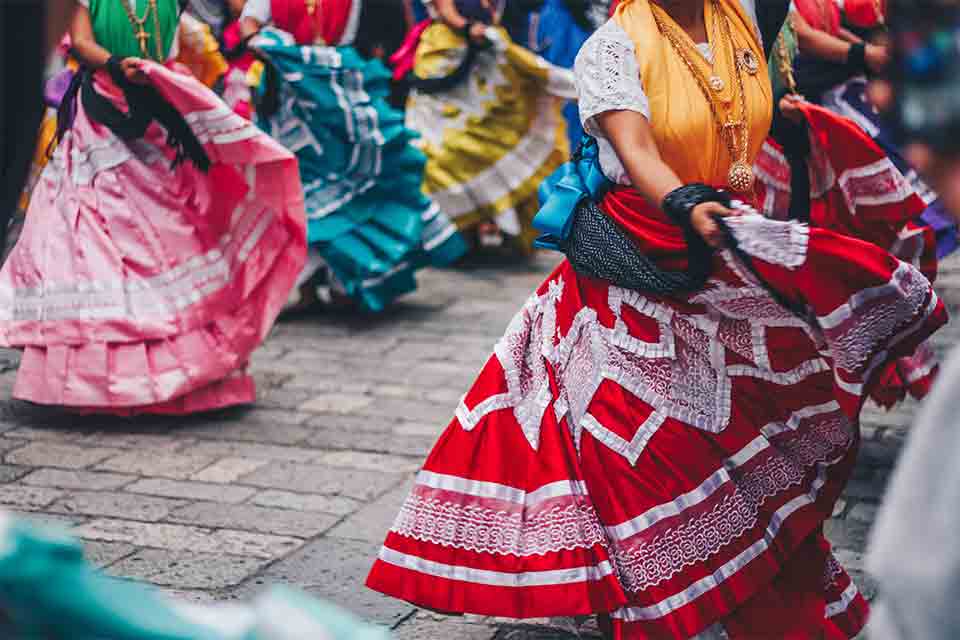
Our guide, Ayumi, is wrapping up a three-hour walking tour of the Mexican city of Oaxaca when she grins and says, “And my final advice is: if you see a callejoneada (parade), follow it. It will make you so happy.” Celebration is infectious here, and I see it everywhere: in the couples dancing to the mariachi band in the main square (Zócalo) every evening; in the fireworks at the church that woke me from a nap; in the supersize papier-mâché puppets called mojigangas that greet me outside shops; in the pink, green, and turquoise houses; and in the delight everyone takes in displaying, preparing, and consuming food—from the delicate scent of fresh guava to the richness of mole.
In fact, it’s the smell of baking bread that gets me up and running on my first morning. Every neighborhood—mine was Merced—has its own large bakery. One of the best is Pan Bamby on Manuel García Vigil, where customers grab a tray with tongs and help themselves to “rustic bread” (sweet fritters) or volcanes (pastries stuffed with vanilla cream). I ate my purchases with a cup of Oaxacan chocolate, called tejate, but you can’t go wrong with locally grown coffee. Chocolate, coffee, and mezcal are all sources of regional pride.
Thus fortified, I was ready to explore the city’s wealth of museums and galleries. One of my favorites was the Museo de Arte Contemporáneo, a few steps from the Zócalo, in a seventeenth-century building named Casa de Cortés. The collection favors Oaxacan artists—among them Francisco Toledo, Rufino Tamayo, and Rodolfo Morales—but includes international artists as well. I asked some young staff members in the office if I was too old to attend a workshop. “Never,” they insisted. “Use Instagram to follow our events.”
Of all the churches in this Catholic city, the Iglesia de Santo Domingo is likely to dazzle you most with its gilded plaster and colored stucco. Next door, its former monastery now houses the Centro Cultural Santo Domingo, which includes a museum of pre-Columbian artifacts, research library, bookstore, and botanical garden. On display are some of the most remarkable pieces of gold, jade, alabaster, and obsidian in all the Americas. If you plan to visit the site, pay special attention to the cache of treasures discovered in Monte Albán’s tomb in 1931. Nearby is the house where former president Benito Juárez lived as a young man from 1818 to 1828, now a museum devoted to his life and work as a reformer. Oaxaca claims this champion of Indigenous rights as a favorite son.

On display are some of the most remarkable pieces of gold, jade, alabaster, and obsidian in all the Americas.
Another favorite son, artist Rufino Tamayo, started his collection of pre-Columbian art in part to prevent the pieces from falling into the hands of illicit traders. Today, Mexicans can see their rich heritage on display at the Museo Rufino Tamayo. A few blocks away, La Mano Mágica specializes in folk art and original crafts, curated with care and gorgeously presented. Are the skeletons reclining in chairs at the entrance to ward off shoplifters?
Oaxaca is one of the best preserved of Mexico’s colonial cities, and, charmed by its centro, I found it easy to forget that this valley, high in the Sierra Madre del Sur, is home to some 270,000 people—until I took a few day trips, when the city’s industry and urban sprawl became more apparent. I hired a private taxi to take me to the Olmec/Zapotec city of Monte Albán, which dominated the region from 500 bce to 800 ce. You’ll need half a day since, after touring the site, you’ll want to visit the museum and maybe enjoy a meal. For the return trip, I hopped a colectivo, a minibus that picks up passengers along a route until it’s full. The difference? 250 pesos (about $12) by private taxi versus 50 pesos (about $2.50) by colectivo. Colectivos gather at the end of Valerio Trujano.
With its mix of Spanish and Indigenous cultures, Oaxaca was designated a unesco World Heritage site in 1987. Its Indigenous traditions thrive in villages like Santa María Atzompa, known for its green-glazed pottery, and San Bartolo Coyotepec, where the ceramicist Doña Rosa Real created a demand for black clay pots. I’m told it’s best to buy both types in the villages themselves, but Indigenous crafts abound in the streets and markets of the centro. I was able to buy alebrijes (carved wooden animals, gaily painted) without traveling to San Antonio Arrazola. You’ll find far more Indigenous crafts every Saturday at the Mercado de Abastos, Mexico’s largest Indian market.
I chose Oaxaca because well-traveled friends remembered it with such fondness. One friend from upstate New York, a painter and poet, decided to relocate permanently. “I was already in my eighties,” says Renée Englander, “and my son thought I was losing my marbles. When he came down to check things out, he looked around and decided to take early retirement.” He now lives nearby. Renée enjoys being part of a vibrant arts community, but what enriches her life are her Oaxacan friends and neighbors. “They are the kindest, most gracious people you’ve ever met,” she tells me.
Most nonnatives who plan to stay long-term sign up for Spanish lessons at one of the many language schools, such as Oaxaca Spanish Magic on de Berriozábal. But even with minimal language skills, I never had a problem. Unlike other places I’ve traveled, no one apologizes for not speaking English; they simply whip out their cell phones and use a translation app. I learned fast. Así de fácil!
New York City
What to Read While Enjoying Oaxacan Chocolate
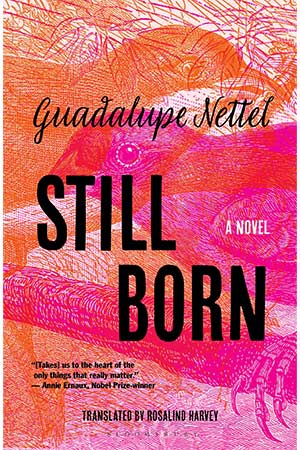 Guadalupe Nettel
Guadalupe Nettel
Still Born
Trans. Rosalind Harvey
Bloomsbury
Set in Mexico City, this award-winning novel follows two female friends who make very different life choices regarding motherhood. Nettel has been praised for examining complex themes with insight and candor. She was the University of Oklahoma’s 2025 Puterbaugh Fellow (see page 22).
 Irma Pineda
Irma Pineda
Nostalgia Doesn’t Flow Away Like Riverwater
Trans. Wendy Call
Deep Vellum
Pineda is a Binnizá poet, translator, educator, and Indigenous-rights activist who has authored twelve books of bilingual (Spanish–Isthmus Zapotec) poetry. Nostalgia tells a story of separation and displacement in two voices: a person who has migrated without papers to the United States, and their partner, who waits at home in the poet’s native town of Juchitán, Oaxaca.
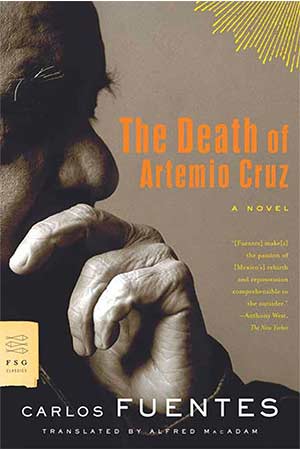 Carlos Fuentes
Carlos Fuentes
The Death of Artemio Cruz
Trans. Alfred MacAdam
Farrar, Straus & Giroux
Fuentes’s masterpiece—and the first work that brought him national and international recognition in 1962— has been called “a haunting voyage into the soul of modern Mexico.” As he lies dying, a newspaper tycoon and land baron relives the major events in his life, from his campaigns during the Mexican Revolution to his relentless climb from poverty to wealth.
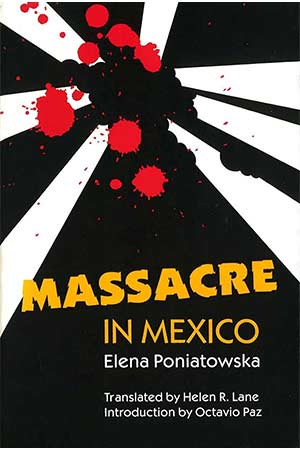 Elena Poniatowska
Elena Poniatowska
Massacre in Mexico
Trans. Helen R. Lane
Viking
This best-known work of the French-born Mexican journalist and author concerns the massacre of 325 unarmed Mexican students who were peacefully protesting police repression one week before the 1968 Olympics in Mexico City. A reviewer at Publishers Weekly describes this event as making “the campus killings at Kent State and Jackson State in 1970 pale by comparison.”

